
Manduca florestan, the Florestan sphinx, is a moth of the family Sphingidae. The species was first described by Caspar Stoll in 1782.
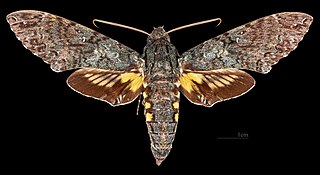
Amphonyx duponchel, or Duponchel's sphinx, is a moth of the family Sphingidae. The species was first described by Felipe Poey in 1832.

Cocytius lucifer is a moth of the family Sphingidae first described by Walter Rothschild and Karl Jordan in 1903.

Manduca occulta, the occult sphinx, is a moth of the family Sphingidae.

Adhemarius gannascus is a moth of the family Sphingidae first described by Caspar Stoll in 1790.

Eumorpha satellitia, the satellite sphinx, is a moth of the family Sphingidae. The family was first described by Carl Linnaeus in 1771. It lives from Brazil and northern Argentina north through Central America, Mexico, and the West Indies to south Texas and southern Arizona.

Eumorpha vitis, known as the vine sphinx, is a moth of the family Sphingidae.

Xylophanes ceratomioides is a moth of the family Sphingidae. It is known from Mexico, Belize, Costa Rica, French Guiana, Bolivia, Argentina and Venezuela, down into southern Brazil. Rare vagrants have been found up to southern Arizona.

Manduca dilucida is a moth of the family Sphingidae first described by William Henry Edwards in 1887.
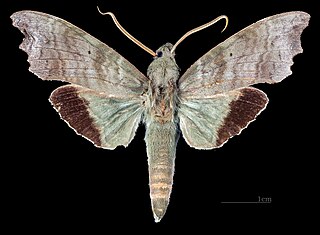
Aleuron chloroptera is a moth of the family Sphingidae. It was described by Maximilian Perty in 1833, and is known from southern Mexico, Brazil, Belize, Guatemala, Nicaragua, Costa Rica, Colombia, Peru, Bolivia, Venezuela, Guyana, Suriname, French Guiana, Paraguay, Argentina and Ecuador. It is probably also present in Uruguay, Honduras, El Salvador and Panama.
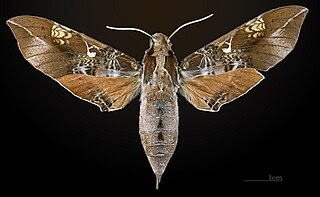
Callionima inuus is a species of moth in the family Sphingidae. It was described by Walter Rothschild and Karl Jordan in 1903.

Callionima parce, the parce sphinx moth, is a species of moth in the family Sphingidae.It was originally described by Johan Christian Fabricius in 1775.

Xylophanes titana is a moth of the family Sphingidae first described by Herbert Druce in 1878.
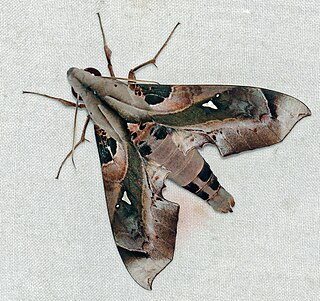
Madoryx plutonius is a moth of the family Sphingidae.
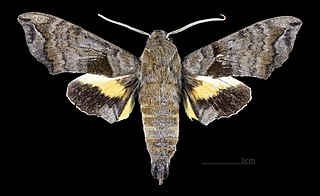
Perigonia ilus is a moth of the family Sphingidae first described by Jean Baptiste Boisduval in 1870.
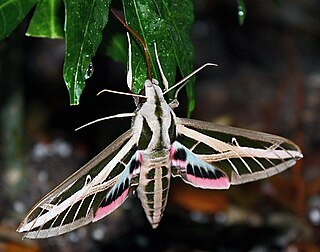
Eumorpha fasciatus, the banded sphinx, is a moth of the family Sphingidae. The species was first described by Johann Heinrich Sulzer in 1776.

Adhemarius ypsilon is a species of moth in the family Sphingidae. It was described by Rothschild and Jordan in 1903 and is known from Costa Rica, Mexico, Belize, Guatemala, Nicaragua, Venezuela, French Guiana, Ecuador, Peru, and Bolivia.
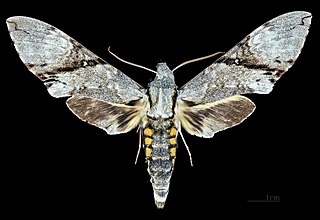
Manduca lefeburii is a moth of the family Sphingidae.
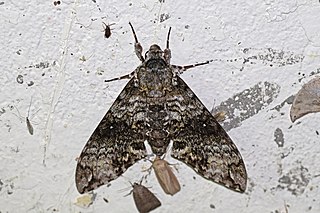
Manduca schausi is a moth of the family Sphingidae. It is found from Mexico, Guatemala, Nicaragua and Costa Rica to Brazil, Argentina and Bolivia.






















